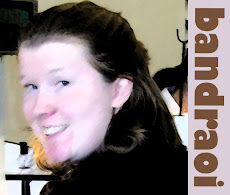I had an interesting conversation with a friend of mine before the holidays regarding the nature of modern children's entertainment. Children's literature is an extremely large field today, with a variety of sub-genres and an almost endless supply of authors and silly titles. However, this conversation centered more around an (unfortunately) more common form of stimulation for today's kids: movies.
The discussion arose when we were discussing Avatar (which had just been released). I was extremely enthused about my experience with it, and recommended it to her - I also threw in that her nine-year-old son would probably enjoy it as well. To this she shook her head and replied that it would be too much for him - she'd rather not expose him to it.
For a second, I was utterly dumbfounded - tall, blue-skinned aliens with mostly suggestive and not direct occasional violence was not what I would view as 'too much' for a boy his age. However, I thought about it - I am constantly overstimulated and overexposed to violence simply because I am a part of American culture. (If I were European, it would be sexuality that I would probably be overexposed to). Avatar, while relatively tame to me, would probably be an enormous challenge for a child under the age of 12 to process.
This got me to thinking about other 'made-for-kids' movies that I probably would NOT show to my kids until they were old enough to get it - and Coraline, an excellent stop-animation film, would be one of them.
I recently watched this movie and was absolutely captivated both by the excellent medium of creation and the wonderfully inventive storyline. However, I was MAJORLY creeped out at several different points of the movie, and can only imagine what my child-self would have had to do to process all the very complex themes and elements contained within that movie.
However, in comparison, Grimm's Fairy Tales are hardly more upbeat. Replace the weird child-killing needle witch with the evil gingerbread-house kid-EATING witch in Hansel and Gretel, (not to mention the abandonment of the children by their own parents), and I think we're on pretty much even keel. However, I clearly remember hearing that story as a child and, while being 'scared', was not terrified or overwhelmed by the themes it presented.
For a long time, I mulled over what made Coraline different from Hansel and Gretel - why do I plan on reading the latter to my children in their cribs, but won't show the movie to them until they're old enough to be bringing home schoolwork I can't help them with? That's when I realized - the factor of imagination.
Grimm's Fairy Tales are extremely complex as well, with a great deal of deep themes that you can spend hours and days and weeks (etc etc) considering. However, they are short, quick-to-tell stories. Few are longer than 5 pages, and most vastly shorter than that. While tales like BlueBeard and The Brave Cobbler have a lot of depth, their descriptions are relatively short. They are put down quickly, with a great deal of 'wiggle room' for a child to imagine what the enemy looks like, how the hero comports himself, and what the princess is wearing. It's not like Coraline, where you can SEE the needles that make the witch's fingers - you have to imagine what a sugared glass window looks like.
And here is where the very important difference between 'children's' movies like Coraline and stories like Grimm's Fairy Tales diverge very distinctly - Coraline tells you, in every detail, what the story is and how it unfolds. The Grimm brothers allow children to fill in the blanks themselves - and if something is too much, they simply can skip over it.
It's very similar to the argument I have with children's toys today - they don't leave a lot of room for imagination. They dolls are fully articulated, fully featured, and completely out of room for a child's imagination. Castles are laden with nifty nooks and crannies that are already full of the creations of its makers - children don't have room to put down their own roots there.
What the Brothers Grimm did (whether or not intentionally) with their often incredibly dark children's stories was to leave kids room to imagine the story for themselves - they gave a relatively blank canvas with a lot of good structure for them to paint their own pictures with. Modern children's movies don't do that - and often actually shy away from leaving room for interpretation.
I will revisit this topic later, but the thought has been percolating for some time and I wanted to get it out. I'm interested to hear thoughts from others, though!
Monday, January 18, 2010
Subscribe to:
Post Comments (Atom)


No comments:
Post a Comment